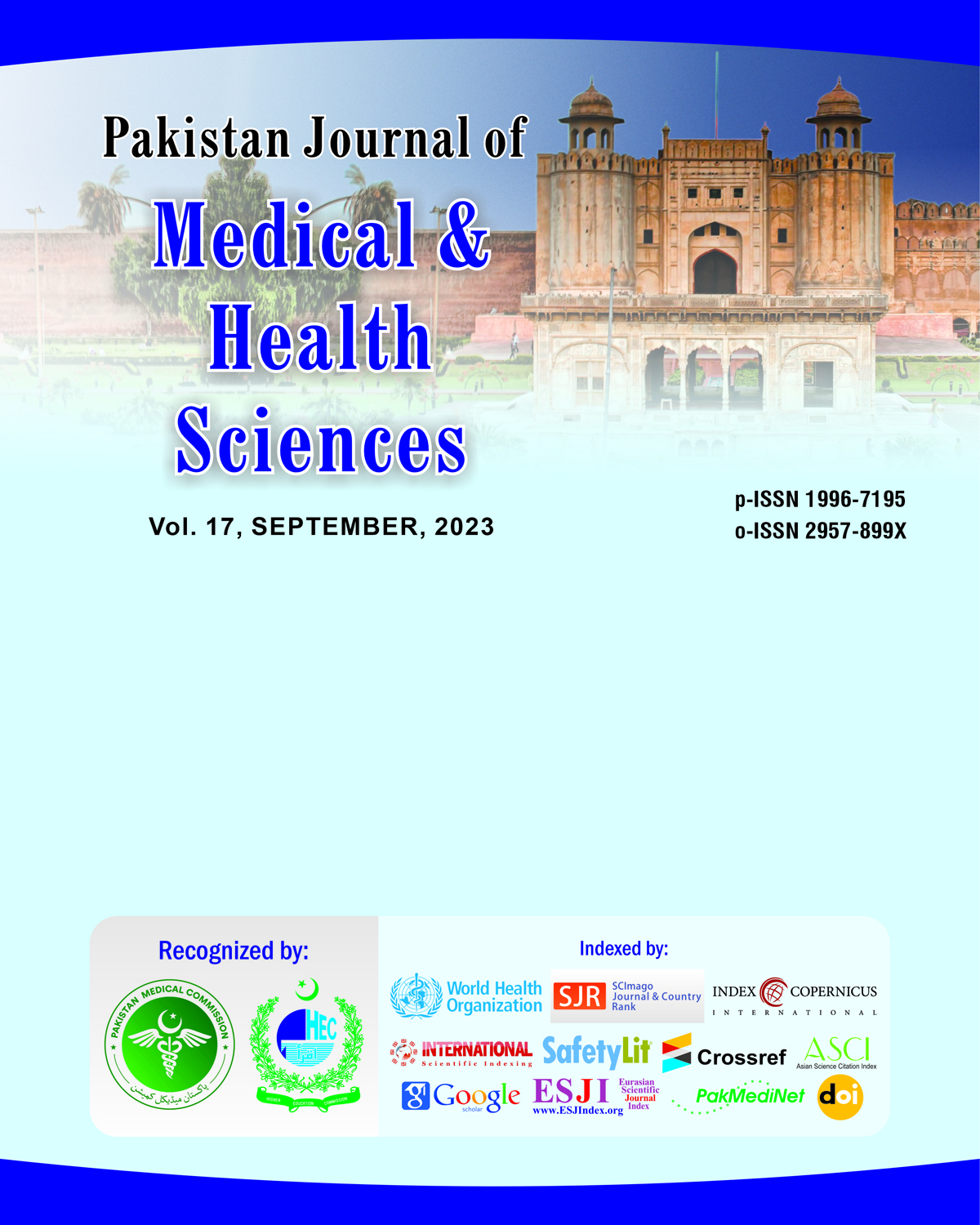Accuracy of Cardiotocography in Diagnosing Fetal Distress
DOI:
https://doi.org/10.53350/pjmhs20231709119Abstract
Background: Surveillance of fetus is a simple method of identifying at risk fetuses for neonatal and delayed complications secondary to asphyxia and therefore preventing morbidity and mortality. Still the clinicians are not able to identify the perinatal asphyxia. Methods used to identify the fetal surveillance are clinical foetal heart auscultation, meconium staining of amniotic fluid, fetal scalp sampling and cardiotocography.
Worldwide the method for Electronic foetal monitoring i-e; EFM is during labour. This method determines different patterns of fetal heart. The screening test like umbilical cord blood pH monitoring, blood gases and excess measurements are used for validating it with CTG for screening of patients during labor. An easy method of investigating fetal oxygenation is umbilical artery sampling.
Objective: To determine the accuracy cardiotocography for diagnosing fetal distress and comparing with umbilical cord arterial blood pH.
Methodology: This cross-sectional study was conducted in the department of Gynaecology and Obstetrics, Abbasi Shaheed Hospital, Karachi after the approval from institution for duration of six months, from July 2021 to January 2022. The sample size of study was n=70, the inclusion criteria CTG traces were taken for fetal heart irregularities taken before 30min of delivery. APGAR was calculated at 1 and 5 minutes. Just after the birth a segment of umbilical cord of nearly 10-15cm was clamped and samples of blood of 3ml was collected from umbilical vein and artery by trained staff and blood gas analysis was done within 30min. The statistical analysis with kappa statistic used to measure between umbilical cord arterial pH and CTG with value >08 is taken as significant.
Results: Out of n=70 patients minimum age was 24 while the maximum age 37years. Mean age was 30.07±4.11 years, gestational age was 37.09±1.26 weeks, and parity was 2.7 ±1.81 respectively. ccuracy came out to be 70.0%. 21 (30%) and 49 (70%) had positive and negative fetal distress respectively.
Conclusion: The strength of agreement between umbilical cord arterial pH and CTG is weak in determining fetal distress. In institutions where umbilical cord availability is not present, CTG can be used to determine fetal distress as a screening tool especially in low resource areas.
Keywords: Fetal distress, accuracy, cardiotocography and umbilical cord arterial blood pH.
Downloads
How to Cite
Issue
Section
License
Copyright (c) 2023 Mehwish Zafar, Saira Jamshed, Sara Yaseen, Ayesha Khalid, Mehmooda Memon

This work is licensed under a Creative Commons Attribution 4.0 International License.


